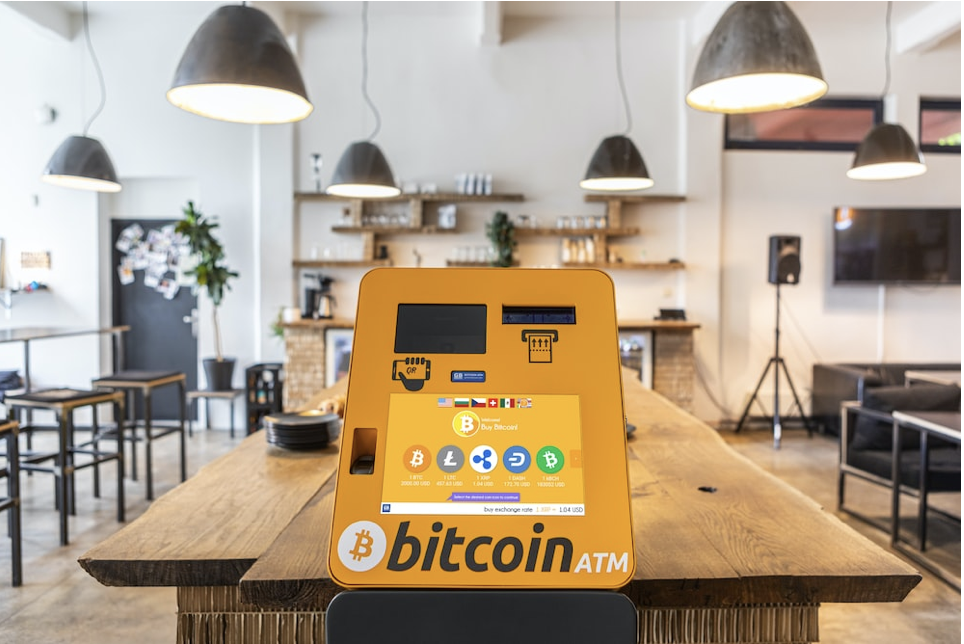A Brief Overview of the Crypto ATM Market.
What is a crypto ATM? If you are reading this article, you probably already know what a crypto ATM is, but for the sake of clarity, let’s define it.
A crypto ATM, known to many as Bitcoin ATM is a cryptocurrency automated teller machine, usually a physical kiosk that allows users to purchase or sell cryptocurrencies like Bitcoin, Ethereum and others, in exchange for cash. Most crypto ATMs only sell Bitcoin, and that is why they are often called Bitcoin ATMs. A good crop of these ATMs also do not allow the sale of cryptocurrency and are limited only to buying. While this article will subtly discuss the functionality and system of crypto ATMs, the focus is on the manufacturers that produce the ATMs and on how profit is generated by owners.
How Do Crypto ATMs Work?
Crypto ATMs work like service kiosks but for cryptocurrency. The ATMs are connected to a cryptocurrency exchange so that all transactions are processed on the blockchain, just like the normal system of crypto purchases on mobile apps. The deposited cash is counted by the kiosk, or if a user prefers the use of a debit card, then the ATM removes the money and deposits the cryptocurrency. Users need to connect their cryptocurrency wallet in all cases, usually done through a QR code. Unlike traditional ATMs, crypto ATMs do not connect to bank accounts. They only connect to users’ digital wallets to send crypto as purchased. There are more than 32,000 crypto ATMs in the United States, with thousands more spread over 84 countries, as of the time of publication of this article.
Top Crypto ATM Manufacturers:
- General Bytes
- Cryptomatic ATM
- Zzbit
- Rusbit
- Chainbytes
- Genesis Coin
- BitAccess
- Bitstop
- Bytefederal
- Coin Solution
How Crypto ATM Manufacturers Operate?
The operation of crypto ATM manufacturers involves several processes, from the design and development of machines to sales and after-sales support.
Here’s a breakdown of how crypto ATM manufacturers typically operate:
- Research and Development (R&D): Just like any other tech product, the development of a crypto ATM begins with R&D. Manufacturers study the market needs, regulations, technological advancements, and user behaviour to design ATM kiosks that are user-friendly, secure, and compliant with local laws.
- Hardware Manufacturing and Assembly: This involves sourcing for components such as computer modules, screens, QR code scanners, cash acceptors and dispensers, printers, and other necessary hardware. Once all components are sourced, assembly lines put together the machines, ensuring they meet the set specifications.
- Software Development: Crypto ATMs require specialized software that allows them to interact with various cryptocurrency networks and perform secure transactions. Software updates are crucial for security patches, adding new features, and ensuring compatibility with newer cryptocurrencies or tokens.
- Quality Assurance and Testing: Before rolling out to the market, crypto ATMs undergo rigorous testing to ensure both their hardware and software components work seamlessly. This ensures that users have a smooth experience and reduces potential issues in the field.
- Regulatory Compliance: Manufacturers must ensure their ATMs are compliant with various local and international crypto ATM regulations. This might involve incorporating specific software features, security measures, or hardware components to meet regulatory standards.
How do Crypto ATM Owners Make Money?
The crypto ATM market industry has witnessed exponential growth in the last four years, with the number of crypto ATMs growing from 9000 in 2020 to 25,000 in 2021 according to Coinatmradar. This makes it obvious that the industry is a profitable one, and more young investors are looking to go into it.
How do crypto ATM owners make money?
Crypto ATM owners earn revenue in many ways, with analysts speculating the average income potential to be around 4k$ monthly. This varies significantly depending on the functionality of the machine (whether it’s a one-way or two-way ATM), location, competition, and local regulations.
Here are the various ways crypto ATMs can generate revenue:
- Transaction Fees: This is the most common way through which crypto ATM operators earn money. They charge a fee on top of every transaction, whether it’s buying or selling cryptocurrencies. The fees can vary widely based on the location and competition but often range around 5% or even higher in some cases.
- Advertisement: ATMs with screens can also be used for advertising. Crypto-related businesses or other local ventures may pay to display their ads on the machine.
- Partnerships and Promotions: Operators might enter into partnerships with cryptocurrency exchanges, wallets, or other businesses, earning a commission for every customer they refer or for other promotional activities.
Keynotes:
- Top Crypto ATM Manufacturers: Excellent manufacturers include General Bytes, Cryptomatic ATM, Zzbit, Rusbit, Chainbytes, and others.
- Significant industry expansion from 9,000 ATMs in 2020 to 25,000 in 2021. Global Crypto ATM Market Size was valued at USD 245.3 Million in 2021, growing at a CAGR of 54.2% during 2021-2030.
- Earning Potential: Crypto ATM owners have a potential average income of around $4k monthly, primarily from transaction fees, advertising, and partnerships.




